The most important issue in disposing of a dead pigeon is protecting yourself from possible infection or contamination.
Here are some simple guidelines to follow:
- Always wear gloves
- Double wrap in plastic bags if disposing of in domestic rubbish
- Do not bag if choosing to bury the bird
- Clean the area where the body was found
- Thoroughly wash your hands (and sometimes clothes) after the disposal
- Know if you need to report the death
For any bird lover, finding a dead bird in your garden is never the most pleasant experience to have to go through.
Whether the pigeon is a member of your own flock or simply a wild bird that took its final breaths in your backyard, being the sensible, caring person that you are, you are still going to want to dispose of it appropriately.
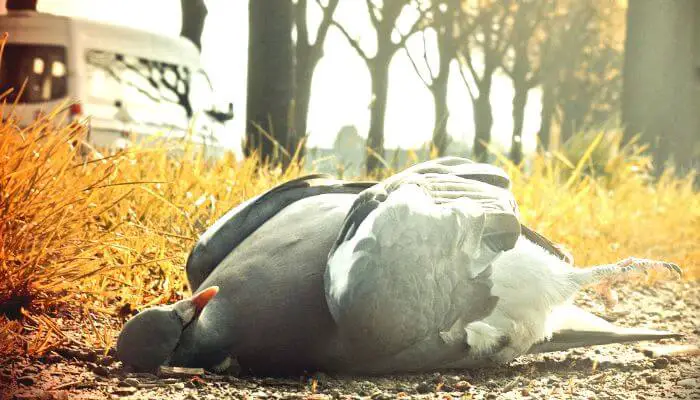
When it comes to disposing of a dead bird that you find in your garden, it isn’t quite as simple or clean-cut as scooping it up and popping it in the bin as you would with any piece of inanimate garbage. There are steps that you should follow for proper disposal.
These steps can vary depending on where in the world you are, as different countries have different rules and regulations when it comes to deceased animals and their carcasses.
It is important to be aware that pigeons may carry diseases, some of which are transferable to humans.
With this in mind, here are some steps and pieces of advice for what to do if you ever come across a dead pigeon in your garden, relating to both the United Kingdom and the United States.
These broad guidelines cover the recommended way of doing things in both countries, but we will highlight any differences along the way.
1. Protect Yourself
When dealing with a dead bird, you should wear gloves at all times.
In the vast majority of cases, you will not know what has caused the death of the bird and it could be bacteria and disease-related.
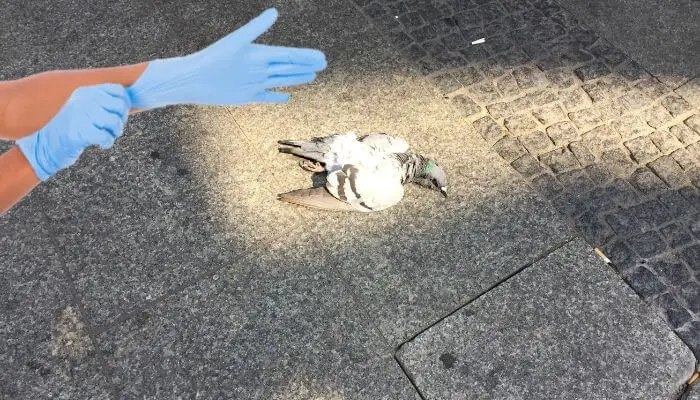
Choose disposable gloves if you can because they can be immediately thrown away.
If you use rubber gloves, wash them thoroughly after you’ve dealt with the bird or even bin them and buy new ones.
If you do not have any gloves to hand, then a good alternative is to use a plastic bag to protect your hands and skin.
2. Use Appropriate Tools
Find a tool that is appropriate for the size of the bird. This can be anything from a small shovel to a rake or other kind of spade.
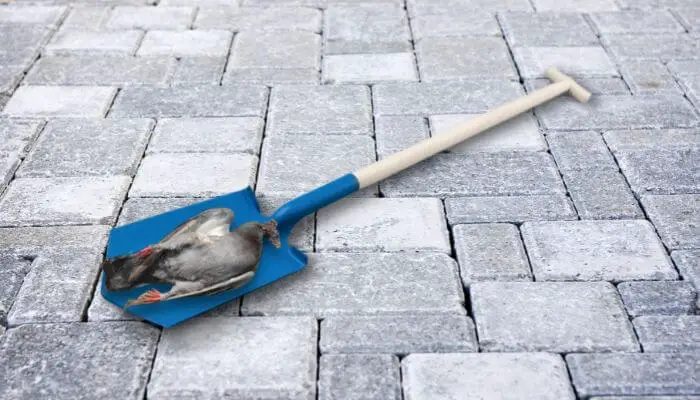
If you want to be extra cautious about not contaminating your possessions, then you can place a sheet of newspaper or piece of cardboard between the bird and your shovel to avoid the two items making contact
3. Wrap The Bird Up
Once you have the bird in a place where you can touch it with gloved hands, you should place it in a plastic bag followed by a second bag that you can twist up and completely seal.
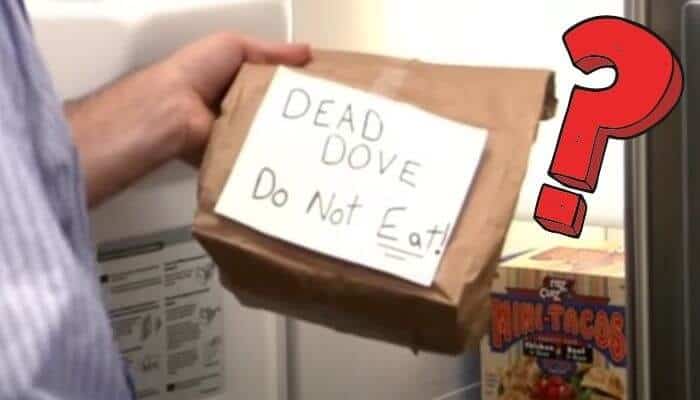
If for any reason you do not have two bags, then doing the same kind of wrapping job with several layers of newspaper or even a disposable rag is acceptable.
4. Hide The Body From Predators
Once securely wrapped, it is important that you place the carcass package in a trash container that is covered and out of reach of everything from scavengers to pets to curious children in the garden.
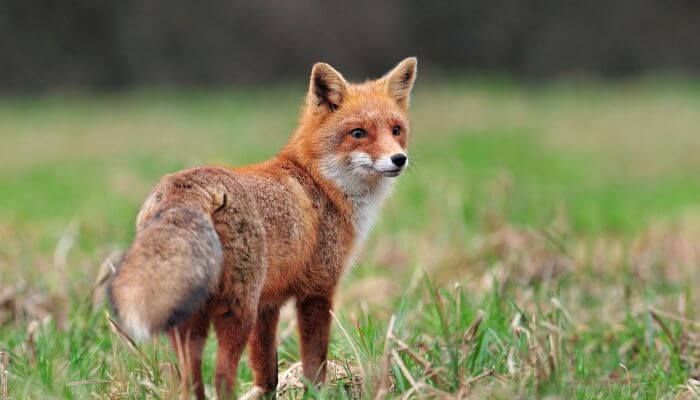
Make sure that the trash can or container you choose can close fully to prevent it from being easily raided by hungry predators.
5. Clean Up Thoroughly
If the bird that you wrapped and moved had any open injuries or noticeable leakages of bodily fluids, then you need to make the effort to clean and sterilize all tools and non-disposable gloves that came into contact with it.
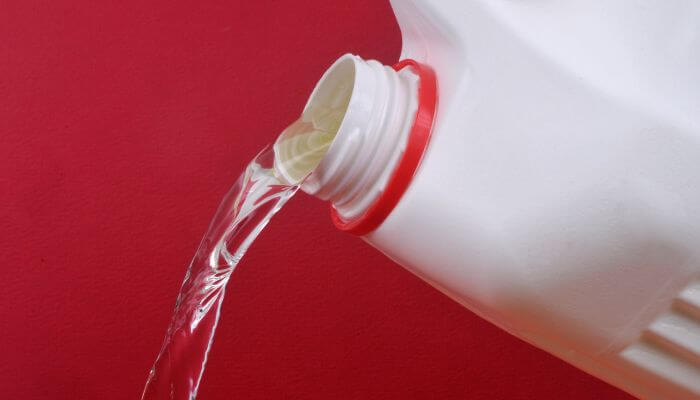
One part bleach to nine parts water will do the trick.
If there was a significant mess at the death site in your garden, then it is a good idea to also go over this area with the bleach mixture.
A patch of your grass might die, but so will any dangerous bacteria.
6. Wash Your Hands
When you have completed the disposal and disinfected the area, thoroughly wash your hand with soapy hot water, even if you did wear gloves.

It is also a good idea to change clothes and wash those you were wearing.
Can I Bury a Dead Pigeon?
If you prefer to not put a bird carcass in your domestic rubbish, you can bury it but there are some guidelines.
The burial hole should be at least 60 cm deep to prevent scavengers from digging up the body.
It must not be buried near any watercourses, or places likely to contaminate local water supplies.
Do Dead Pigeons Need To Be Reported?
The guidelines on this question change only slightly between the United Kingdom and the United States.
In the UK, you are urged to report a bird death if you happen to find five or more birds dead together.
The report should be made to the Department for Environment, Food and Rural Affairs (DEFRA).
It is the same for the USA. It should be reported when there has been a large-scale carcass discovery or something very unusual.
You should report dead pigeons to the state authorities, which can be:
- Department of wildlife and fisheries
- Department of Agriculture and Forestry, Office of Animal Health Services
- U.S. Department of Agriculture, Wildlife Services
In the majority of cases, you will not need to report finding the carcass of a pigeon in your garden, especially if there are no unusual signs on or around the body.
There are a few occasions where it might be necessary to notify a local or national department or organization.
These include:
- If the bird appears to have been killed by a human, for example, been noticeably shot or manhandled.
- If you notice that several birds of the same species have died in your area over a short period of time. Frequent unexplained bird deaths can be a sign of a disease outbreak (for example avian flu) that will need to be tracked and investigated.
- If the dead bird in question is a large bird of prey. Of course, this does not apply to a pigeon.
- If the bird in question has been tagged or banded. This will mean that it is being used for data retrieval purposes by research scientists or is the property of somebody who will want to know that their bird has died.
Tags and bands are registered with the two associations in the UK and USA:
- UK – Royal Pigeon Racing Association
- US – American Racing Pigeon Union or the National Pigeon Association
If the bird is not usually found to fly in your area. This could be an indicator that something unusual in the bird trade is going on.
It’s not a nice job to dispose of a dead pigeon but it must be done for the health and safety of your garden environment. Follow the steps above and it won’t be too harrowing an experience.
If you don’t want to dispose of the bird yourself, contact a local animal removal/pest control company.
